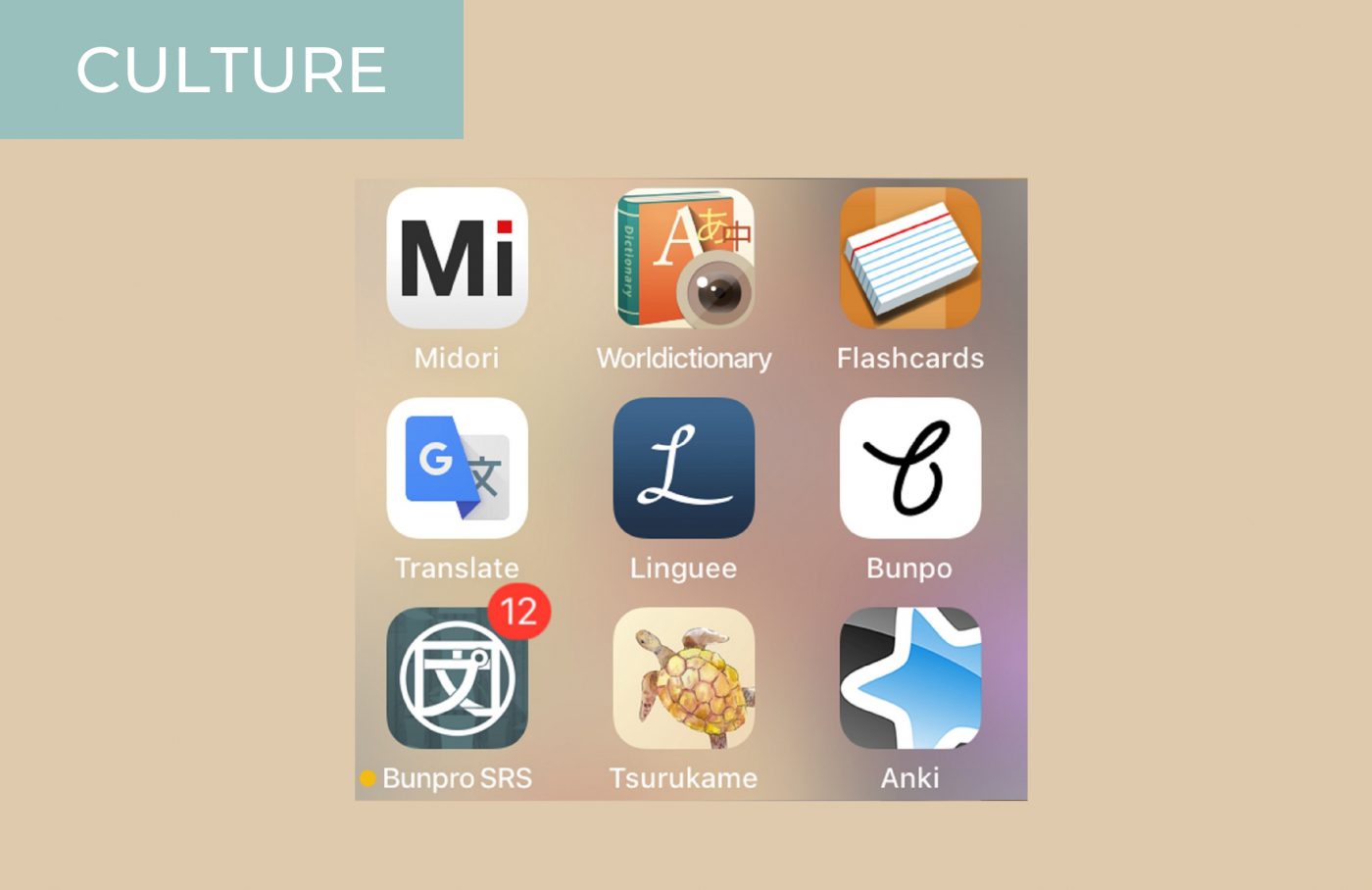I’ve been augmenting my Japanese studies with technology ever since I brought my trusty iPhone 3G from the States to Japan when I moved here in 2009. Taking the device overseas reduced it to nothing more than an overweight iPod Touch, but that was enough to start exploring the nascent Apple App Store. So, I loaded it up with dictionary and flashcard apps and never looked back. Over the years, some apps have stood the test of time while others have fallen into obsolescence. In this article, I’ll share what’s serving me best in 2020 as well as a list of runners-up that Japanese learners might also want to consider.
1. Midori (iOS)
I’ve used several English/Japanese dictionaries over the last decade. In fact, I used to keep three of them on my phone at once. Each dictionary had its own unique features that made it worth holding onto.
However, as time passed, it became clear that I only needed one: Midori. This dictionary became a necessity from its inception with its exclusive (at the time) text translation feature. Over time, Midori’s feature set and user interface continued to improve, and eventually, it served all of my Japanese/English dictionary needs. Midori is universal, so a single purchase includes the iPhone and iPad versions of the app (the latter includes a handy digital scratch pad for kanji practice). Although there are free and more aesthetically pleasing apps out there, most Japanese learners will find that Midori’s functional, user-friendly design makes the app worth the investment.
2. Worldictionary (iOS and Android)
For travelers who aren’t studying Japanese, Google Translate is the gold standard for translations on the go. However, despite the marked improvement in AI translation over the years, we all know that Google’s translations still often produce unintelligible results when it comes to complex content.
Japanese language learners often have a solid grasp on sentence structure and grammar, but reading comprehension can be thwarted by a sentence that includes several unknown kanji or vocabulary words. Worldictionary solves this problem by enabling you to scan or photograph Japanese copy from books, magazines, or even your computer screen. Simply hover your cell phone camera over unknown Japanese characters and Worldictionary will produce instant translations of each word, complete with its phonetic reading as well.
Keep in mind that this app isn’t for translating large amounts of text at once. The heavy lifting is up to the user and, for those actively studying Japanese, that’s a good thing. You can use this app with your existing knowledge of the language to produce more accurate translations than AI can deliver—at least for the time being…
3. Flashcards Deluxe (iOS and Android)
I use several digital flashcard apps, but this is the one that I’ve used the longest and most consistently for capturing new Japanese words and kanji characters that I encounter in my daily life.
Flashcards Deluxe has a steep learning curve, but it’s worth the effort. The default spaced-repetition algorithm is powerful and customizable. The app also has a plethora of flash card design options (especially if you build your decks in a spreadsheet). Perhaps most importantly, you can make flash cards that have more than two sides—perfect for making kanji cards that require you to drill the character, its meaning, and its reading. Learn more about Flashcards Deluxe (and flash cards in general) in this article.
Honorable mentions

Of course, the above three apps aren’t the only Japanese-learning apps I keep on my phone. They’re just the ones that I use most. Depending on your learning style, you may find some of the following useful:
- Flashcard apps
– Anki
– Tsurukame (unofficial WaniKani app)
– Kanji and grammar learning apps
– Bunpo (not to be confused with Bunpro)
– Dictionaries and translators
– Linguee
The mobile learning landscape is constantly shifting, and there are useful apps appearing all the time. Do you have any language-learning apps that you can’t live without? Let us know via your favorite social media platform.





